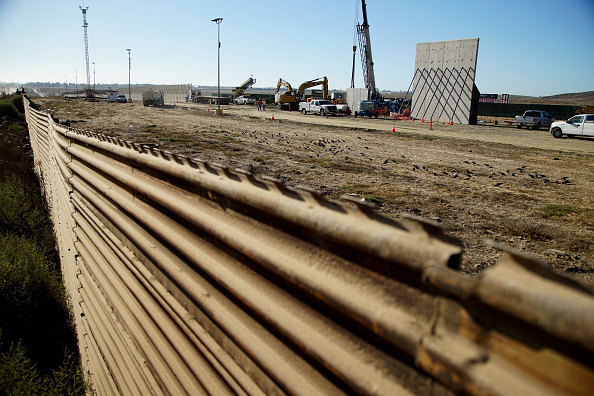In the political limbo that exists between last weekend’s brief government shutdown and the next spending deadline three weeks hence, the White House and Senate Democrats have been busy posturing over various potential deal points. Facing heat from liberals, Senate Minority Leader Chuck Schumer of New York backtracked on an offer he had previously made to trade substantial funding for President Trump’s border wall in return for a path to citizenship for Dreamers, undocumented residents of the U.S.–mostly young people–who came to this country as children. From Davos, President Trump predicted Schumer would cave on border-wall funding in exchange for resolving the DACA issue. According to ABC News, Trump said he will ask for $25 billion to build the wall, but “will build it way under budget.”
As a standoff looms or, possibly, gives way to some good old-fashioned legislative logrolling, it’s worth taking a minute to reiterate what many experts on migration have said all along: Namely, that building a border wall is a profoundly dumb idea.
An investigation by the Texas Tribune into the efficacy of a border wall suggests that a miles-long physical barrier will stop the flow of neither drugs nor people into the U.S. Though people certainly cross through the Rio Grande Valley, and a structure there could be effective locally, most illicit activity such as smuggling and human trafficking already occurs elsewhere anyway. “The government’s own reports show that drug smugglers mostly bring their product into the United States through ports of entry — not across the river where the wall would be built,” the Texas Tribune reports.
Meanwhile, drug smugglers who spoke to the Tribune said their method of moving goods into the U.S. was fairly simple: They hide drugs in seemingly legitimate shipments that slip through checkpoints and, if that fails, they simply find a corrupt border guard they can bribe. “We always had a [paid] lookout from the Border Patrol,” one smuggler told the Tribune. “Border Patrol, cops, whatever, they’re gonna get that money.”
To the alarm of experts who study the issue, Mexican cartels have in recent years consolidated control of human smuggling, helping groups of Central American migrants cross the U.S. border safely, albeit illegally, in return for those migrants carrying small amounts of drugs on their person. And smugglers continue to innovate in other ways, testing drone crossings, for example.
A wall, these experts say, is at best a blunt response to a complex problem that cartels will likely quickly overcome. If the wall–at $25 million a mile–succeeds in the short term, the rub is that drug prices will jump, making smuggling even more lucrative for the cartels. And if a physical barrier ultimately fails to stem the flow of people and narcotics, the cost paid by all of us could be even more severe.
That’s because the debate over Trump’s “big, beautiful” imaginary wall comes at a time when the very real problem is more menacing than ever. As more states legalize marijuana, cartels are focusing their efforts on transporting harder drugs instead; 90% of the heroin in the U.S. now crosses the Mexican border, and meth and cocaine shipments are rising as well. In place of a wall, one could imagine the government working instead to help stabilize and improve the Central and South American countries that are the source of all those desperate people crossing the border.
And along with seeking to punish smugglers, one could imagine a set of policies that look inward. Drugs wouldn’t be flowing into the U.S. if Americans weren’t using them. As long as demand remains high, no wall will ever be tall enough to keep the supply at bay.
